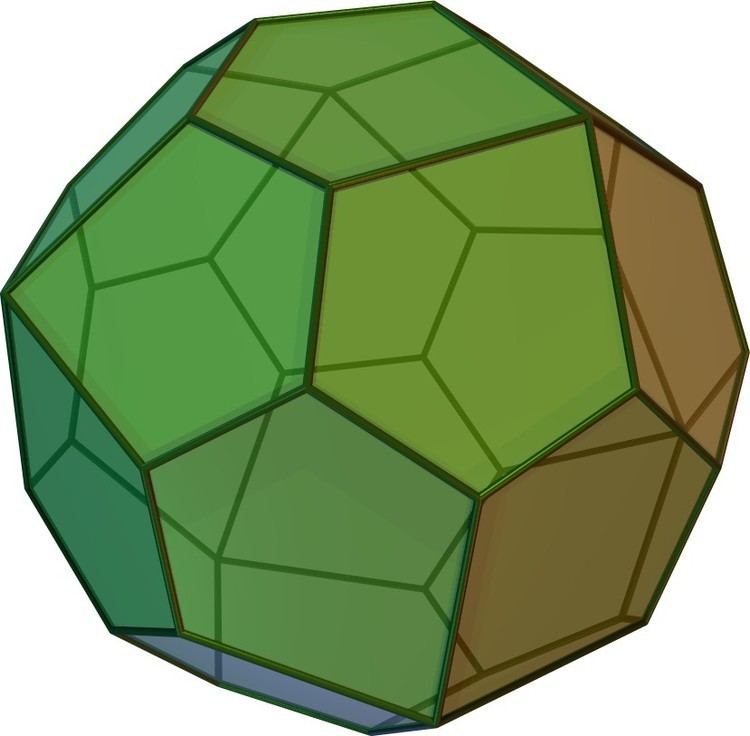 | ||
In geometry, a pentagonal icositetrahedron or pentagonal icosikaitetrahedron is a Catalan solid which is the dual of the snub cube. In crystallography it is also called a gyroid.
Contents
It has two distinct forms, which are mirror images (or "enantiomorphs") of each other.
Geometry
Denote the tribonacci constant by t, approximately 1.8393. (See snub cube for a geometric explanation of the tribonacci constant.) Then the pentagonal faces have four angles of cos−1 (1 − t/2) ≈ 114.8° and one angle of cos−1 (2 − t) ≈ 80.75°. The pentagon has three short edges of unit length each, and two long edges of length t + 1/2 ≈ 1.42. The acute angle is between the two long edges.
If its dual snub cube has unit edge length, its surface area and volume are:
Orthogonal projections
The pentagonal icositetrahedron has three symmetry positions, two centered on vertices, and one on midedge.
Related polyhedra and tilings
This polyhedron is topologically related as a part of sequence of polyhedra and tilings of pentagons with face configurations (V3.3.3.3.n). (The sequence progresses into tilings the hyperbolic plane to any n.) These face-transitive figures have (n32) rotational symmetry.
The pentagonal icositetrahedron is second in a series of dual snub polyhedra and tilings with face configuration V3.3.4.3.n.
The pentagonal icositetrahedron is one of a family of duals to the uniform polyhedra related to the cube and regular octahedron.
